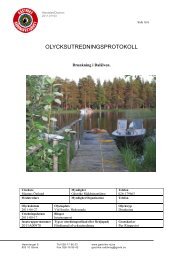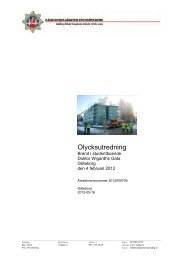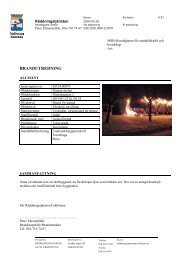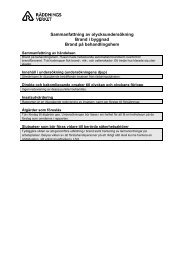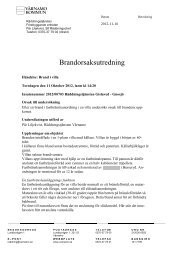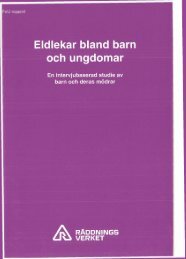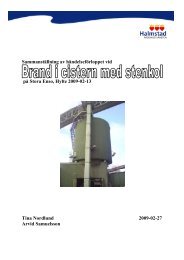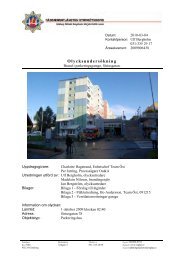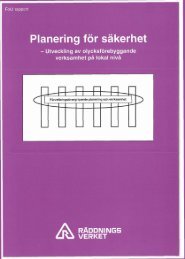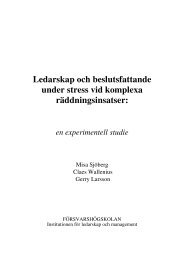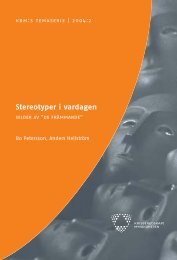Spontaneous Ignition - A Litterature Study of Experimental Methods
Spontaneous Ignition - A Litterature Study of Experimental Methods
Spontaneous Ignition - A Litterature Study of Experimental Methods
Create successful ePaper yourself
Turn your PDF publications into a flip-book with our unique Google optimized e-Paper software.
13The most common approach is instead to obtain groups <strong>of</strong> parameters (in equation (4)) bysearching for critical behaviour in a material under controlled ambient conditions. Thenormal procedure is to conduct small-scale tests using a pre-heated air oven with thesample placed in a wire-mesh container in the centre <strong>of</strong> the oven. In order to comply withthe condition <strong>of</strong> a high Bi-number in the F-K theory the air in the oven is re-circulated tocreate high convection from the sample surface. Critical conditions within the sample aredetermined from temperature measurements using fine thermocouples.2.2.1 The ‘Frank-Kamenetskii method’This indirect evaluation <strong>of</strong> the Frank-Kamenetskii parameter is based on thedetermination <strong>of</strong> the critical temperature for a known size <strong>of</strong> a material in small-scaleoven tests. If rewriting equation (4) as shown below Tln L202 P ERT0(11)where, E Q AP ln R (12)2 2it can be seen that a plot <strong>of</strong> ln( cT 0/ L ) versus 1/T0for a number <strong>of</strong> tests with varyingsample sizes (L) would form a straight line with - E/R as the slope and P as intercept. Thecritical F-K parameters ( ) for the geometries tested have to be calculated according tocthe principles discussed in Section 2.1.2. Thus E and QA could be extracted from suchmeasurements.Once these material parameters are determined from the small-scale tests it would bepossible to predict the critical size for any full-scale configuration (see equation (5)), or tocalculate the Frank-Kamenetskii parameter for any specific configuration and comparewith the critical parameter to get an assessment <strong>of</strong> the criticality <strong>of</strong> such a configuration.In practice the „F-K method” involves a number <strong>of</strong> separate, rather time consuming,heating tests with at least two different sizes <strong>of</strong> sample containers. Thin thermocouplesare used for measuring the temperature in the oven (T 0 ) and the temperatures at the centreand the periphery <strong>of</strong> the sample. The critical temperature (T 0 ) for each size <strong>of</strong> samplecontainer is determined by repetitive tests at oven temperatures successively closer to thecritical temperature. In this way the critical value <strong>of</strong> the temperature may be bracketed inas closely as desired. It is usually found that ignition is very sharply defined and adifference in oven temperature <strong>of</strong> only 0.5C will produce a sharp rise in the recordedcentral temperature [2]. The closeness with which the critical temperature is determined isobviously reflected in the precision <strong>of</strong> the calculation <strong>of</strong> the lumped kinetic parameters. Amaximum error <strong>of</strong> ±0.5C is recommended if data should be used for extrapolations overa wide range <strong>of</strong> sizes.




